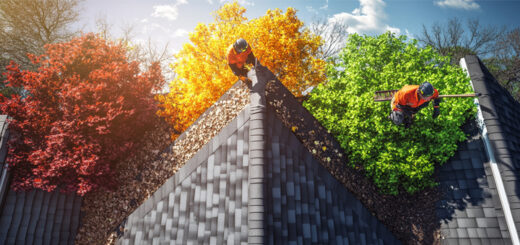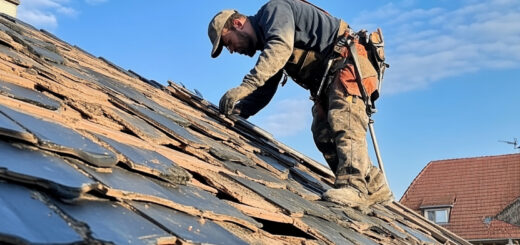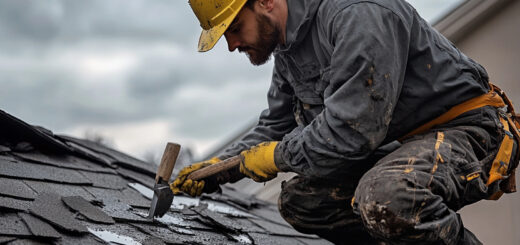Signs It’s Time to Rejuvenate Your Roof
Understanding the Importance of Roof Maintenance
Maintaining your roof is a crucial aspect of home protection that often goes overlooked. Roof maintenance involves regular inspections and timely repairs to ensure the longevity and functionality of your roofing system. This proactive approach can prevent minor issues from escalating into significant problems, saving homeowners both time and money in the long run.
One of the primary benefits of consistent roof upkeep is the prevention of leaks, which can lead to water damage within your home’s interior. Water infiltration not only damages walls, ceilings, and personal belongings but can also foster mold growth, posing health risks to occupants. Regular roof maintenance allows for early detection and repair of potential leak sources, safeguarding your home against such hazards.
Another important aspect is the preservation of structural integrity. Over time, weather conditions like heavy rain, snow, and strong winds can take a toll on roofing materials. Routine inspections by professional roofing services can identify wear and tear or any structural weaknesses that need attention. Addressing these issues promptly ensures that your roof remains strong enough to withstand harsh weather conditions.
In addition to protecting your home, proper roof maintenance can enhance its aesthetic appeal and market value. A well-maintained roof contributes significantly to curb appeal, making a positive impression on potential buyers should you decide to sell your property.
In conclusion, investing in regular roof maintenance is essential for home protection. It prevents costly repairs down the line, preserves structural integrity, enhances aesthetic appeal, and ultimately contributes to a safe living environment. Engaging professional roofing services for routine inspections ensures that any issues are identified early on and addressed effectively.
Visible Damage and Wear: Shingles that are Missing, Cracked, or Curling
One of the most evident signs of roof wear and tear is damaged shingles. Over time, shingles can become cracked, curled, or even go missing entirely due to exposure to harsh weather conditions such as heavy rain, wind, and extreme temperatures. These visible damages are not merely cosmetic issues; they are critical indicators that your roof may need immediate attention.
Cracked shingles can result from thermal expansion and contraction. This process weakens the shingle material over time, making it susceptible to breaking. Similarly, curling shingles often indicate age-related wear or moisture buildup beneath the surface. When shingles curl, they expose the underlying layers of your roof to potential water damage.
Missing shingles are perhaps the most straightforward sign that your roof requires repair. Strong winds or severe storms can dislodge shingles completely, leaving gaps that compromise your home’s protection against the elements.
Recognizing these roofing repair signs early on is crucial for maintaining the integrity of your home. If you notice any damaged shingles on your roof, it’s advisable to consult with a professional for a thorough inspection and possible shingle replacement before minor issues escalate into more significant problems.
Leaks and Water Damage Inside Your Home
Roof leaks can be a homeowner’s worst nightmare, often leading to extensive water damage if not promptly addressed. Identifying the early signs of water damage is crucial in preventing further deterioration of your home’s interior. Common indicators include discoloration on ceilings or walls, peeling paint, and the presence of mold or mildew. These signs often point to underlying issues such as interior roof damage or waterproofing problems.
Waterproofing issues can exacerbate the situation by allowing more moisture to seep into your home. This not only compromises the structural integrity of your property but also poses health risks due to mold growth. Regular maintenance and inspections are essential in identifying potential problem areas before they escalate.
To mitigate these risks, it is advisable to consult with a professional who can assess the extent of roof leaks and recommend appropriate solutions. Whether it’s repairing damaged shingles, sealing gaps, or enhancing your home’s waterproofing measures, taking proactive steps can save you from costly repairs down the line.
Moss and Algae Growth on the Roof Surface
Moss growth on roofs and algae on shingles are common issues that many homeowners face. These organisms thrive in damp, shaded environments, making rooftops an ideal breeding ground, especially in regions with high humidity or frequent rainfall. Moss tends to grow into thick mats that can trap moisture against the roof surface, leading to potential damage over time. Algae, on the other hand, often appear as dark streaks or patches and can make shingles look unsightly.
Cleaning moss off a roof is essential not only for aesthetic reasons but also for maintaining the integrity of your roofing materials. There are several methods available for cleaning moss off roofs, including manual removal with brushes or scrapers and applying chemical treatments specifically designed to kill moss and algae. It’s important to follow proper safety protocols when performing these tasks or consider hiring professionals to ensure effective and safe removal.
Preventing algae buildup is equally crucial in maintaining a clean and durable roof surface. Installing zinc or copper strips along the ridge of your roof can help inhibit algae growth since rainwater will wash traces of these metals down the shingles, creating an environment less conducive to algae proliferation. Regularly trimming overhanging branches can also reduce shade and improve air circulation around your roof, further minimizing conditions that favor moss and algae development.
By understanding how moss and algae affect your roof and taking proactive steps for cleaning and prevention, you can extend the lifespan of your roofing materials while keeping your home looking its best.
Aging Roof: How Old is Too Old?
When it comes to maintaining your home, understanding the lifespan of your roof is crucial. The age of a roof matters significantly in determining its overall health and effectiveness. Typically, the roof lifespan expectancy varies depending on the materials used. Asphalt shingles, for instance, generally last about 20 to 25 years, while metal roofs can endure for 40 to 70 years.
Replacing an old roof is not just about aesthetics; it’s a matter of safety and efficiency. An aging roof can lead to leaks, structural damage, and increased energy bills due to poor insulation. Regular inspections are essential as they help identify signs of wear and tear early on, allowing homeowners to take timely action.
In conclusion, knowing when your roof has reached the end of its lifespan can save you from costly repairs down the line. If your roof is nearing or has surpassed its expected life expectancy, it may be time to consider replacing it with a more durable option that suits your needs and budget.
Sagging or Uneven Areas in the Roofing Structure
One of the most concerning issues homeowners may encounter is sagging or uneven areas in the roofing structure. Recognizing sagging roof signs early can be crucial in preventing more extensive damage and costly repairs. Common indicators include visible dips or depressions on the roof surface, interior ceiling cracks, and doors or windows that are difficult to open due to shifting frames.
Structural roofing issues often stem from a variety of causes such as water damage, excessive weight on the roof, aging materials, or poor construction techniques. Addressing these problems promptly is essential for maintaining the integrity of your home. Uneven roof surface repairs might involve reinforcing the underlying support structures, replacing damaged sections of roofing material, or improving drainage systems to prevent future water accumulation.
Regular inspections by a qualified roofing professional can help identify and mitigate these issues before they escalate. By staying vigilant and proactive about maintenance, homeowners can ensure their roofs remain safe and sturdy for years to come.
The Impact of Increased Energy Bills Due to Poor Insulation
High energy bills can often be traced back to poor insulation, particularly in the roofing of a home. When a roof is not properly insulated, it allows heat to escape during the winter and lets excessive heat enter during the summer. This inefficiency forces heating and cooling systems to work harder, leading to increased energy consumption and higher utility costs.
Roofing issues are a common culprit behind poor insulation. Over time, materials can degrade or become damaged, reducing their effectiveness. Addressing these issues promptly is crucial for maintaining energy efficiency.
Energy efficiency improvements can significantly reduce high energy bills. Better insulated roofs are one of the most effective ways to achieve this. By investing in quality insulation materials and ensuring proper installation, homeowners can create a more stable indoor environment that requires less energy to maintain.
In conclusion, tackling poor insulation through targeted roofing improvements not only helps in lowering energy bills but also contributes to a more comfortable living space and reduced environmental impact.












